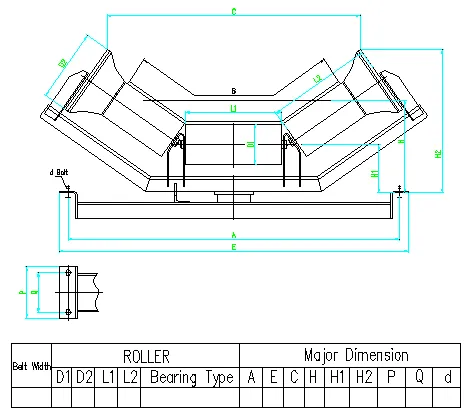 Afrikaans
Afrikaans  Albanian
Albanian  Amharic
Amharic  Arabic
Arabic  Armenian
Armenian  Azerbaijani
Azerbaijani  Basque
Basque  Belarusian
Belarusian  Bengali
Bengali  Bosnian
Bosnian  Bulgarian
Bulgarian  Catalan
Catalan  Cebuano
Cebuano  Corsican
Corsican  Croatian
Croatian  Czech
Czech  Danish
Danish  Dutch
Dutch  English
English  Esperanto
Esperanto  Estonian
Estonian  Finnish
Finnish  French
French  Frisian
Frisian  Galician
Galician  Georgian
Georgian  German
German  Greek
Greek  Gujarati
Gujarati  Haitian Creole
Haitian Creole  hausa
hausa  hawaiian
hawaiian  Hebrew
Hebrew  Hindi
Hindi  Miao
Miao  Hungarian
Hungarian  Icelandic
Icelandic  igbo
igbo  Indonesian
Indonesian  irish
irish  Italian
Italian  Japanese
Japanese  Javanese
Javanese  Kannada
Kannada  kazakh
kazakh  Khmer
Khmer  Rwandese
Rwandese  Korean
Korean  Kurdish
Kurdish  Kyrgyz
Kyrgyz  Lao
Lao  Latin
Latin  Latvian
Latvian  Lithuanian
Lithuanian  Luxembourgish
Luxembourgish  Macedonian
Macedonian  Malgashi
Malgashi  Malay
Malay  Malayalam
Malayalam  Maltese
Maltese  Maori
Maori  Marathi
Marathi  Mongolian
Mongolian  Myanmar
Myanmar  Nepali
Nepali  Norwegian
Norwegian  Norwegian
Norwegian  Occitan
Occitan  Pashto
Pashto  Persian
Persian  Polish
Polish  Portuguese
Portuguese  Punjabi
Punjabi  Romanian
Romanian  Russian
Russian  Samoan
Samoan  Scottish Gaelic
Scottish Gaelic  Serbian
Serbian  Sesotho
Sesotho  Shona
Shona  Sindhi
Sindhi  Sinhala
Sinhala  Slovak
Slovak  Slovenian
Slovenian  Somali
Somali  Spanish
Spanish  Sundanese
Sundanese  Swahili
Swahili  Swedish
Swedish  Tagalog
Tagalog  Tajik
Tajik  Tamil
Tamil  Tatar
Tatar  Telugu
Telugu  Thai
Thai  Turkish
Turkish  Turkmen
Turkmen  Ukrainian
Ukrainian  Urdu
Urdu  Uighur
Uighur  Uzbek
Uzbek  Vietnamese
Vietnamese  Welsh
Welsh  Bantu
Bantu  Yiddish
Yiddish  Yoruba
Yoruba  Zulu
Zulu Essential Components for Building a Reliable Conveyor Frame System
Understanding Conveyor Frame Parts The Backbone of Material Handling Systems
Conveyor systems play a critical role in the modern industrial landscape, facilitating the efficient movement of goods and materials within various sectors, from manufacturing to logistics. At the heart of these systems lies the conveyor frame, a crucial component that ensures stability and support for all other conveyor parts. Understanding the function and design of conveyor frame parts is essential for optimizing system performance and ensuring longevity.
A conveyor frame is primarily constructed from durable materials such as steel or aluminum, providing the necessary strength to handle heavy loads. The choice of material significantly impacts the overall weight capacity and durability of the system. Steel frames, while heavier, offer superior strength and are often used in heavy-duty applications. On the other hand, aluminum frames are lighter, making them ideal for applications where weight reduction is essential without compromising structural integrity.
Frame parts can be divided into several key components cross members, side rails, and support legs. Cross members connect the side rails, providing added stability and preventing flexing during operation. This design is crucial, especially when conveying heavy items or when there are significant lateral forces at play. Side rails, meanwhile, guide the material, ensuring that items move smoothly along the conveyor and do not fall off or become misaligned. Their height and design can be customized based on the specific requirements of the materials being transported.
conveyor frame parts

Support legs are another vital part of the conveyor frame. They ensure that the entire system remains at the correct height and supports the weight of the payload. Adjustable support legs can be crucial in applications where the conveyor needs to be leveled on uneven surfaces, allowing for seamless operation.
Moreover, the design of conveyor frames can vary widely based on the application. Modular frames, for example, allow for easy reconfiguration and expansion, making them popular in dynamic environments that require flexibility. Other designs focus on enhancing safety, incorporating features such as guards to prevent accidents or enclosures to protect sensitive materials.
Maintaining conveyor frame parts is just as important as their initial construction. Regular inspections for wear and tear, along with timely repairs or replacements, can prevent costly downtime. Lubrication of moving components and ensuring tight connections can also enhance the longevity of the conveyor system.
In conclusion, the conveyor frame is a pivotal aspect of material handling systems. By understanding its components and maintenance needs, businesses can improve their operational efficiency, reduce downtime, and extend the lifespan of their conveyor systems. Investing in high-quality frame parts and regular upkeep ensures that these systems reliably serve their purpose in an increasingly automated industrial world.
-
Revolutionizing Conveyor Reliability with Advanced Rubber Lagging PulleysNewsJul.22,2025
-
Powering Precision and Durability with Expert Manufacturers of Conveyor ComponentsNewsJul.22,2025
-
Optimizing Conveyor Systems with Advanced Conveyor AccessoriesNewsJul.22,2025
-
Maximize Conveyor Efficiency with Quality Conveyor Idler PulleysNewsJul.22,2025
-
Future-Proof Your Conveyor System with High-Performance Polyurethane RollerNewsJul.22,2025
-
Driving Efficiency Forward with Quality Idlers and RollersNewsJul.22,2025





























